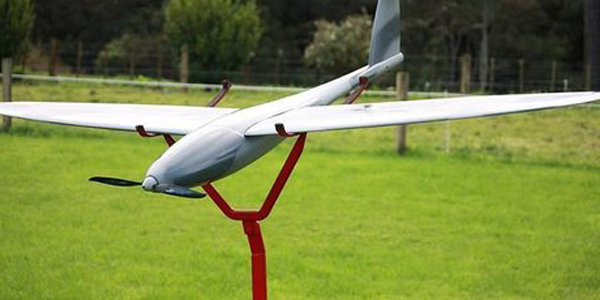AreoHawk is a miniature UAV optimised for acquiring data for processing in photogrammetry software and general purpose imaging.
It was developed by Hawkeye UAV, which is headed by two former NZ Army officers, one of whom was head of the Army’s unmanned aircraft programme. The other was until last year the manager of a security company in Iraq. The company’s main focus in New Zealand is on 3D mapping for commercial clients such as mining companies, and local government. Hawkeye has so far received about $30,000 in government funding to help with research and development, and works closely with the Defence Technology Agency (DTA), as well as the Civil Aviation Authority (CAA), he says.
The chief executive of the Aviation Industry Association, Irene King, says it is a “highly sensitive” area, but says there is more going on in New Zealand than many people realise. “A lot of the design and development is done here, but the actual manufacture is done offshore.”
Although unmanned aircraft are mostly used for aerial photography, “some of the bigger ones are into pretty interesting covert surveillance”, she says. “There’s a whole black art out there, absolutely. Some of it is stuff that is really out of Boy’s Own and people can react quite badly to some of it … We don’t go out there and ‘ra ra ra’ because these things all have a quasi-military use and if you’re going to get into that space, then you are pretty tight-lipped about what you are doing and why.”
The CAA’s manager of sport and recreation, Rex Kenny, says New Zealand companies are “right up there” in the UAS industry. “In fact there has been a New Zealand UAS sold into Australia for their universities there, so that alone is quite an achievement.”
Last August about 40 people attended a meeting organised by the CAA to discuss development of the industry. According to one account, the CAA considered regulation an “urgent and substantial” project.
Kenny says it is not that simple, and any new regulation has not necessarily been budgeted for. However, he has been working with Australian authorities, who have already developed some regulations.
Anyone wanting to fly an unmanned aircraft in New Zealand airspace is currently required to get authorisation from the CAA. So far, four authorisations have been issued. “We’re just using that at present but we will have to come up with some specific UAV rules at some stage,” he says.
“There’s lots of issues like privacy, for a start, and they’re not allowed to fly over contested areas. For helicopters, if they’re doing photography they have to make sure the area directly under the UAV is clear. For fixed wings, they’re using a recovery parachute.”
Unmanned flights have, in fact, been occurring in New Zealand for some time. Back in the 80s, Nelson couple Adrian and Hugh Kingsford were pioneers in aerial photography. According to one account, their flights were more of a danger to traffic on the ground than in the air, because they used rural roads as runways.
Kenny agrees the industry has huge potential, particularly for surveillance. “They’ve got lots of great uses,” he agrees, “but they’ve got limitations as well.”
Both the New Zealand Army and Navy use UAS technology. The Army’s mini-plane is known as the Kahu, and the Navy has a much larger model known as the Phoenix. An Army publication from 2008 explained how the Kahu helped provide intelligence analysts with “a better understanding of enemy movements and intentions”. It also noted the Army was using software developed by Auckland companies Marops and Eagle Technology.
Kenny says it is unusual to have such close co-operation between the civil and military sectors, and suspects the Army may have another model that is still classified. “I’ve come to realise that even if this one is very, very good and very capable, they’ve got another one which they obviously won’t talk about, because if you were in the defence business you would keep that close to your chest.”
Although the industry is developing rapidly, the real breakthrough will come when seek-and-avoid systems are developed, enabling a UAS to detect another aircraft and move out of the way, he says. “Whoever does that will become a multimillionaire. And there’s no reason it can’t be a Kiwi.”
Source: NZ Herald

